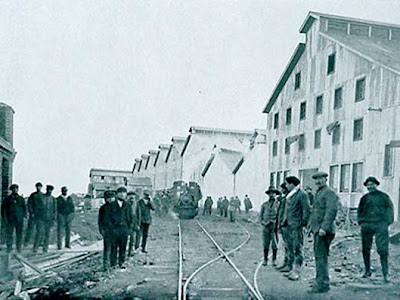Whether or not Singer does jail time as the responsible
party – he denies his culpability - it’s unlikely that stronger criminal
penalties will prevent future wildfires. The fact is that, since I first
trekked the Paine backcountry in 1981 and saw only three other hikers in ten
days, park visitation has increased by leaps and bounds. It's now pushing 150,000
visitors per year and, while not all of them hike the strenuous overnight
circuits that offer the park’s optimum experience, numbers alone make it
likelier that some inexperienced camper will commit a costly blunder.
No increased legal penalty is likely to reduce that
statistical probability but, arguably, closer supervision of hiking permits
could help. While I would not want to see the park trails limited to guided
hikes, obligatory attendance at a fire safety lecture by park authorities could
make sense – this would be easy to organize when visitors pay their park entry
permits - and rangers should hike the trails to check permits.
While we’ve heard lots of sensationalism and political
opportunism in the aftermath of the fire, we’ve not heard much detail about the
actual impact. Fortunately, the Corporación
Nacional Forestal (Conaf) has published a statistical summary that provides
a more thorough glimpse into what happened. Of the area in question, roughly 60
percent consists of bunch grass steppe that, other things being equal, will
recover quickly. Nearly all the rest, however, comprises native forest of southern
beech and a few other species that, in this environment, have a short growing
season, so this is more problematical. The Conaf map above suggests the extent
of the fire, but not its intensity in any given area.
Meanwhile, from Puerto Natales, my friend Tim Burford –
author of a competing guidebook whose name I will refrain from mentioning here
– reports that the park is indeed open. Staying at the new all-inclusive hotel The Singular, in nearby Puerto Bories, he wrote that
they were sending two trips into Paine, one to the isolated eastern Sector
Laguna Azul, and that the highly regarded Berkeley operator Wilderness Travel –
for whom I once worked briefly – was also sending a group. The Glaciar Grey
segment of the “W” route may be closed for January but, as Tim says, “there’s a
lot of pressure to get the rest of the park open ASAP to keep Natales
alive."
As a digression, it’s worth mentioning The Singular, which
was under construction when I was in Natales during the last austral summer.
It’s taken part of the historic Frigorífico Bories (pictured above around 1920), the
meat freezer that was one of the area’s biggest employers, and recycled it into
a state-of-the-art facility that presumably will compete with other elite
accommodations such as Hotel Indigo
Patagonia, Hotel
Altiplánico del Sur, and Hotel Remota.
To repeat, my new Sutro Media iPhone app, Argentina
Travel Adventures, is now on sale at the iTunes Store for just $2.99. Also
suitable for the iPad and iPod Touch, it’s an ideal and inexpensive resource for researching
your trip to the buoyant capital city of Buenos Aires, the thundering Cataratas
of Iguazú, the wine country of Mendoza, Patagonia’s groaning Glaciar Moreno,
and many other destinations.




No comments:
Post a Comment